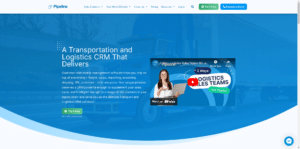The failure rate is 90%.
An article on CIO.com estimates that the failure rate for CRM projects ranges from 18-69%. Are failure rates for CRM projects really this bad?
It’s worse.
According to Scott Edinger, in his post for HBR, the failure rate was actually closer to 90%.
“The numbers ranged from 18% to 69%. Those failures can mean a lot of things — over-budget, data integrity issues, technology limitations, and so forth. But in my work with clients, when I ask executives if the CRM system is helping their business to grow, the failure rate is closer to 90%.”
Why do small businesses choose the wrong CRM?
Are they stupid?
I’ll admit it, that’s a pretty rude way to state the problem. Here’s the thing, though; people quickly jump to this conclusion when other companies are discussed, but they’re offended if their company is the one getting the side eye.
They’re not stupid.
So why do most companies struggle with CRM implementation or achieving results?
Edinger explains.
"The primary reason they miss the mark in helping companies increase revenue is that CRM systems are too often used for inspection — to report on progress, improve the accuracy of forecasts, provide visibility, predict project delivery dates, and provide a range of other business intelligence — rather than creating improvement in the sales process. Front-line sales professionals and managers rarely find the majority of these capabilities useful in winning more business for the company."
The CRM system is expected to be all things to all people, which means it’s impossible to achieve the one thing a CRM is designed to do.
“CRMs today also serve a lot of masters, from executives in the C-suite, technology, marketing, finance, and, oh yeah, sales. They try to address more objectives than are reasonable for any software system. I recently led a working session for a team of executives looking to select a CRM provider. By the time everyone weighed in on their must-haves, we had identified 23 unique objectives. With such a diluted focus, it’s virtually impossible to succeed.”
So what is your CRM supposed to do?
Generate revenue by systematically improving the sales process.
That’s it.
Yes, progress reports, accurate forecasts — the business intelligence, all of that is important too. But these additional features should be in a distant second place.
Improving sales revenue, that’s the primary focus if your business wants to survive over the long term.
What your business needs to choose the right CRM
If you’re like most companies, you want to increase sales revenue (believe it or not, some companies don’t). If you’re looking to increase sales and you want your CRM to help you do that, choosing the right CRM is essential.
What do you need to choose the right CRM?
- Make a list of your goals, objectives, and metrics.
- Gather feedback from your end users (e.g., managers, salespeople, decision-makers, stakeholders, etc.). Identify the desires, fears, problems, and frustrations end users have. Address the elephant in the room; what would get them to use their CRM? What would they consider a deal breaker?
- Outline the features you’ll need in your ideal solution. Do you need detailed analytics? Does management want ad hoc reports? Which features are essential must-haves for your sales team?
- List the candidates that best fit your criteria. This should include demos, free trials, onboarding, and support. Price shouldn’t be the primary driver.
- Provide your team with the training and onboarding they need to use your new CRM effectively.
- Incentivize CRM usage so end users (salespeople in this case) use the CRM consistently.
This all seems pretty straightforward, right?
At this point, we’re ready to move on to the next step in the process.
The dangers of CRM shopping
CRMs aren’t created equal.
As I mentioned in my primer “What is CRM?” this software comes in four varieties.
- Strategic: This is a macro, high-level view of CRM that caters to managers, directors, and executives. This type of CRM is implemented across several departments (IT, sales, marketing, support, service, etc.) focused on broad changes across the company as a whole. At this level, CRM is used for strategic planning and long-term growth across key metrics (e.g., customer lifetime value, average order values, monthly recurring revenue, etc.). Examples include: Salesforce, Sugar CRM
- Operational: This is a meso-level view of CRM focusing on three specific areas — sales, marketing, and service/support. When we talk about CRM, we’re usually talking about operational CRM. This is the type of CRM that’s used to drive sales and increase revenue directly. Examples include: Pipeline CRM, Act
- Analytical: This type of CRM is designed for business analysts and data scientists; the primary focus is investigation, whether that takes place at a macro, meso, or micro-level. Analysts collect and present the data in a format that managers use to make decisions. The majority of their time is spent analyzing trends, patterns, and behavior. The focus isn’t really on selling. It’s really about using CRM to answer questions (e.g., why do sales prospects ghost us when we send them a quote? Why are new customers spending more money on these products?). Examples include: Zoho Analytics, Vtiger CRM
- Collaborative: This approach focuses on internal and external dialogue — tech support sharing common customer complaints with sales; sales using that data to improve their pitch, which marketing incorporates into official sales copy. Examples include: HubSpot CRM, Sugar CRM
Here’s why CRM shopping is dangerous.
Let’s say you’re in the market for a CRM. Your sales managers want to be able to document the progress of each salesperson daily. They’re looking for a tool to improve their sales team’s performance and increase revenue over time.
They do some shopping.
They settle on a CRM that looks good. It’s got great reviews and seems to be a tool that will do the job. So they sign up for the tool and get accounts for each of their sales reps.
Just one problem.
It’s a collaborative CRM tool that’s closer to a help desk than it is a true CRM.
It fails to improve sales.
The CRM tool isn’t used by sales to improve revenue because that’s not its core function. It wasn’t designed as an operational CRM. This kind of failure is unbelievably common.
Counteract CRM failure by finding the right CRM
How do you do that?
Remember the goals, objectives, and metrics you collected earlier? You’ll need to take a closer look at each of those now. You’ll want to identify the following details.
- Which team’s goals and objectives take priority? (e.g., executives, stakeholders, sales, etc.) Only one business unit should take priority here.
- Which team will be the primary end-user of the CRM system? (it should be the same as above).
- What are their goals and objectives?
- Which metrics and KPIs will be used to verify success?
Here’s what that looks like.
- Which team’s goals take priority?
Sales - Which team will be the primary end-user?
Sales reps - What are their goals and objectives?
Disqualify prospects quickly, focus on deals that will close, and increase average order values + repeat sales (i.e., commissions) - Which metrics and KPIs will be used?
Conversion/win rates, revenue per sales rep, average deal size, churn rate per user, deals lost per sales rep, quota attainment
Here’s why this exercise is important.
It tells you what kind of CRM you’ll need to buy. Looking at our answers to these questions, it’s pretty clear we need an operational CRM. For this example, the ideal CRM would be an Operational CRM, one that’s designed to drive sales and increase revenue directly.
Can you see what’s happening?
By answering a few simple questions, we can identify the CRM that will help us reach the specific organizational goals we have.
It’s an easy way to bring CRM failure rates down.
Choosing the right CRM is the fast track to success
Remember what Edinger said?
“When I ask executives if the CRM system is helping their business to grow, the failure rate is closer to 90%… The primary reason they miss the mark in helping companies increase revenue is that CRM systems are too often used for inspection — to report on progress, improve the accuracy of forecasts, provide visibility, predict project delivery dates, and provide a range of other business intelligence — rather than creating improvement in the sales process. Front-line sales professionals and managers rarely find the majority of these capabilities useful in winning more business for the company.”
To increase sales, you’ll need to choose the right CRM. We’ve put together a free guide on how to choose the best CRM for your business to help you.
Shift your attention from a CRM focused on inspection and analysis to one focused on operations and improving performance. Use your goals as a guide, and you’ll find the CRM that drives results up and to the right.




